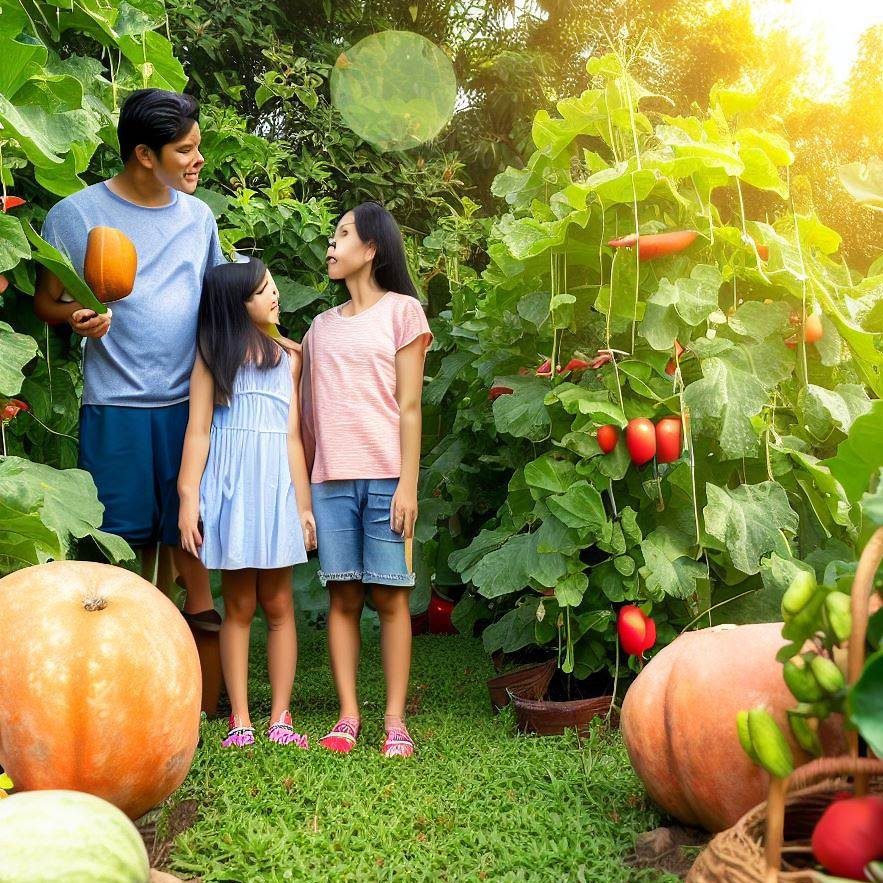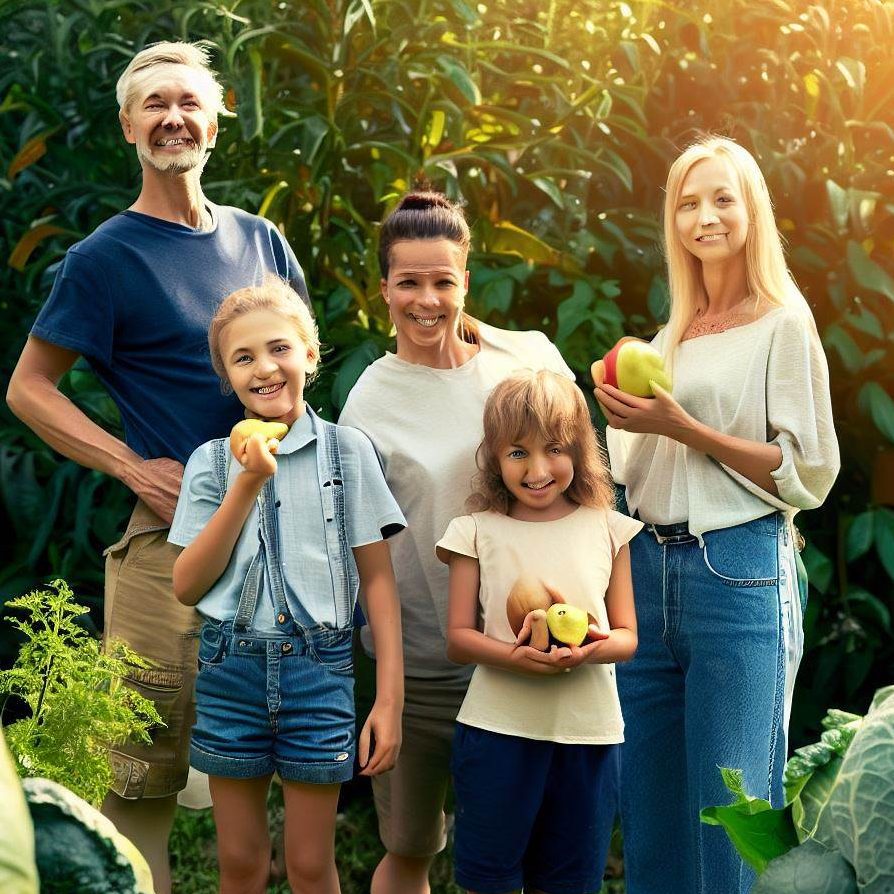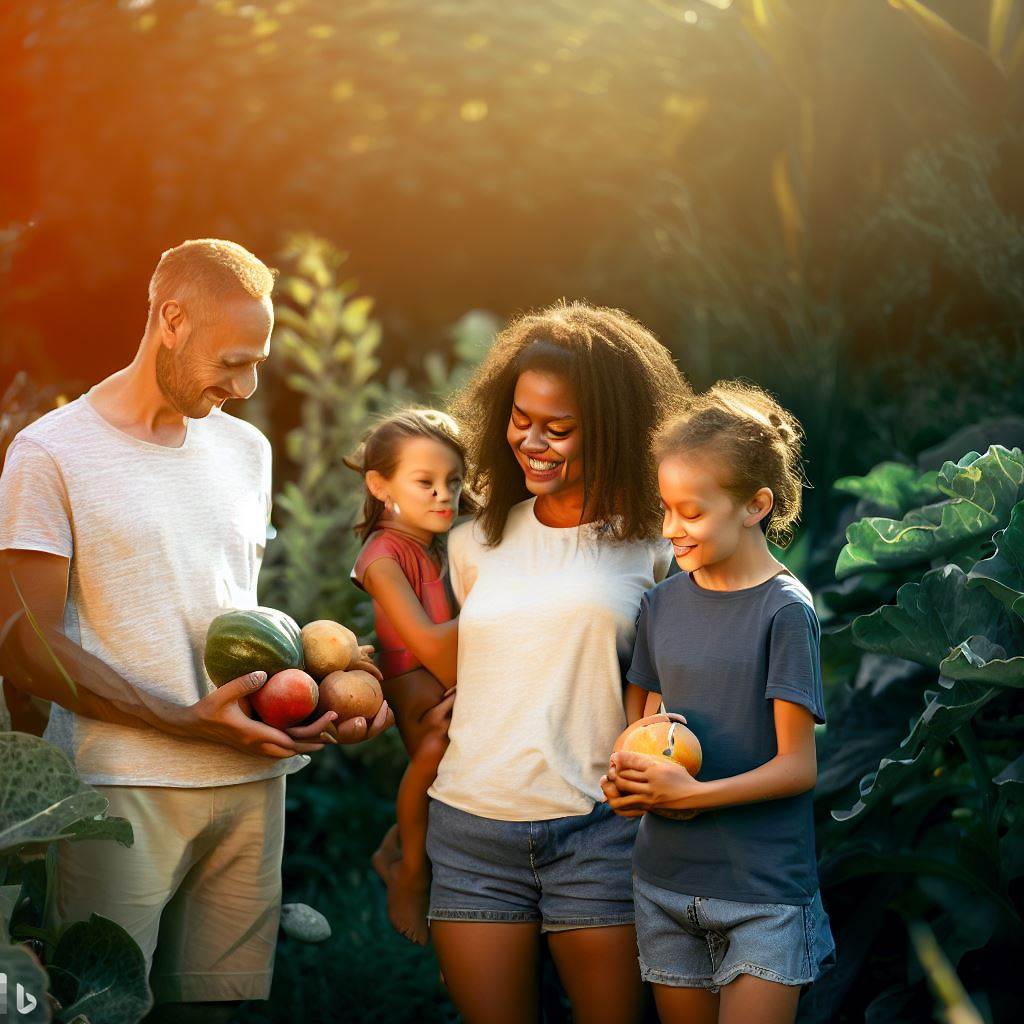Growing your own food can be rewarding and healthy, but it can also be challenging if you have limited space and sunlight. Here are some tips and suggestions for growing vegetables in a shady English garden:

Choose the right plants
Not all vegetables need full sun to grow well. Some can tolerate or even prefer partial or light shade, especially in hot weather. Some of the best vegetable crops for shade are:
- Swiss chard
- Brassicas (cabbage, broccoli, kale, etc.)
- Beetroot
- Salad leaves (lettuce, spinach, rocket, etc.)
- Kohlrabi
- Radishes
- Carrots
- Turnips
- Leeks
- Potatoes
You can also grow some herbs in shade, such as mint, parsley, chives and lemon balm.
Improve the soil quality
One of the challenges of growing vegetables in shade is to ensure they receive enough nutrients and moisture. You should make sure you’re working with good quality soil that is rich in organic matter, well-drained and slightly acidic. You can improve your soil by adding compost, manure, leaf mould or other organic amendments. You can also mulch your plants with straw, wood chips or grass clippings to conserve moisture and suppress weeds.

Adapt the moisture needs
Another challenge of growing vegetables in shade is to balance the water needs of your plants. Depending on the type and degree of shade, your plants may need more or less water than those in full sun. You should check the soil moisture regularly and water your plants when the top inch of soil feels dry. You should also avoid overhead watering that can cause fungal diseases and water at the base of the plants instead.
Keep an eye out for pests
Shady areas can attract more pests and diseases than sunny ones, especially slugs, snails, aphids and mildew. You should inspect your plants regularly and remove any pests or infected parts by hand. You can also use organic methods such as beer traps, copper barriers, diatomaceous earth or neem oil to deter or control pests.

Understand the maturation time will be slower
Vegetables grown in shade will take longer to mature and produce less yield than those grown in full sun. You should understand that your plants will need more time to reach their optimal size and quality. You should also choose varieties that have shorter growing seasons or are suitable for container gardening.
Try succession planting
To make the most of your shady space and extend your harvest season, you can try succession planting. This means planting different crops in the same area at different times, so that you always have something growing and harvesting. You should sow seeds in small batches every few weeks for continuous cropping. You can also interplant fast-growing crops like radishes or lettuce with slower-growing ones like carrots or potatoes.

Preserve your produce
To enjoy your homegrown vegetables throughout the year, you can preserve them by various methods such as freezing, drying, canning or pickling. Some of the best ways to preserve different vegetables are:
| Vegetable | Preservation method |
|---|---|
| Swiss chard | Blanch and freeze |
| Brassicas | Blanch and freeze or ferment |
| Beetroot | Pickle or can |
| Salad leaves | Dry or freeze |
| Kohlrabi | Pickle or ferment |
| Radishes | Pickle or ferment |
| Carrots | Freeze or can |
| Turnips | Freeze or pickle |
| Leeks | Freeze or dry |
| Potatoes | Store in a cool, dark place |
I hope this helps you grow your own vegetables in a shady English garden.
How to Grow Your Own Food Indoors: A Beginner’s Guide
Growing your own food indoors is a great way to enjoy fresh, healthy and organic produce all year round. It can also save you money, reduce your environmental impact and give you a sense of satisfaction and accomplishment. However, growing your own food indoors can also be challenging, especially for beginners. You need to consider factors such as space, light, temperature, humidity, soil, water, pests and diseases. In this article, we will share some tips and tricks on how to grow your own food indoors successfully.
Benefits of Growing Your Own Food Indoors
Growing your own food indoors has many benefits, such as:
- You can grow a variety of crops that may not be available or affordable in your local market, such as herbs, salad greens, microgreens, sprouts, mushrooms, tomatoes, peppers, strawberries and more.
- You can control the quality and safety of your food by avoiding pesticides, herbicides, fungicides and other chemicals that may be harmful to your health and the environment.
- You can harvest your food at its peak freshness and flavor, which can enhance its nutritional value and taste.
- You can reduce your food waste by only harvesting what you need and using the leftovers for composting or feeding your pets.
- You can save money by reducing your grocery bills and transportation costs.
- You can reduce your carbon footprint by avoiding the emissions and resources involved in transporting and storing food from faraway places.
- You can improve your mental and physical well-being by engaging in a relaxing and rewarding hobby that can reduce stress, boost mood, increase creativity and provide exercise.
How to Grow Your Own Food Indoors: A Step-by-Step Guide
To grow your own food indoors successfully, you need to follow these steps:
- Choose a suitable space for your indoor garden. You need to find a spot that has enough room for your plants and containers, as well as access to natural or artificial light. Ideally, you want a south-facing window that receives at least six hours of direct sunlight per day. If you don’t have enough natural light, you can use grow lights to supplement or replace it. You also need to make sure that the space has good ventilation and drainage, as well as protection from drafts, extreme temperatures and pests.
- Choose the right containers for your plants. You can use any type of container that has drainage holes at the bottom, such as pots, trays, buckets, baskets or recycled materials. However, you need to consider the size and depth of the container according to the type of plant you want to grow. For example, shallow containers are good for herbs and salad greens, while deep containers are good for tomatoes and peppers. You also need to choose containers that are easy to move around and clean.
- Choose the best soil for your plants. You can use potting soil or make your own mix of organic matter, such as compost, peat moss, perlite or vermiculite. You want a soil that is loose, fertile and well-drained. You also want to avoid using garden soil or soil from outside sources as they may contain pathogens or pests that can harm your plants.
- Choose the right plants for your indoor garden. You can grow almost any type of plant indoors as long as you provide them with the appropriate conditions. However, some plants are easier to grow indoors than others. Some examples of easy-to-grow indoor plants are:
- Herbs: basil, parsley, cilantro, mint, oregano, thyme
- Salad greens: lettuce, spinach, kale
- Microgreens: radish
- Sprouts: alfalfa, broccoli, mung bean
- Mushrooms: oyster, shiitake, button
- Tomatoes: cherry, grape, roma
- Peppers: bell, jalapeño, cayenne
- Strawberries: alpine, everbearing, day-neutral
You can start your plants from seeds or buy seedlings from a nursery or garden center. You can also use cuttings or divisions from existing plants. Make sure to follow the instructions on the seed packets or plant labels for sowing, transplanting and spacing.
- Plant your seeds or seedlings in your containers. Fill your containers with soil and make small holes or furrows according to the size and depth of your seeds or seedlings. Place your seeds or seedlings in the holes or furrows and cover them lightly with soil. Water them gently and thoroughly until the soil is moist but not soggy. Label your containers with the name and date of planting.
- Place your containers in a sunny spot or under grow lights. Make sure your plants receive enough light for their optimal growth and development. You can use a timer to set the duration and intensity of your grow lights according to the needs of your plants. Generally, most plants need 12 to 16 hours of light per day. You can also rotate your containers every few days to ensure even exposure to light.
- Water your plants regularly and properly. Check the soil moisture by inserting your finger an inch deep into the soil. If it feels dry, water your plants until the water drains out of the bottom of the containers. If it feels wet, wait until it dries out a bit before watering again. Avoid overwatering or underwatering your plants as they can cause root rot or wilting. You can also use a spray bottle to mist your plants occasionally to increase humidity and prevent dust buildup.
- Fertilize your plants occasionally and moderately. You can use organic or synthetic fertilizers that are specially formulated for indoor plants. Follow the directions on the fertilizer package for the amount and frequency of application. You can also use compost tea or worm castings as natural fertilizers that can enrich your soil and boost your plant growth. Avoid overfertilizing or under fertilizing your plants as they can cause nutrient burn or deficiency.
- Prune and harvest your plants as needed. You can prune your plants to remove dead, diseased or damaged parts and to shape them according to your preference. You can also pinch off the tips of some plants such as herbs and salad greens to encourage bushier growth and more production. You can harvest your plants when they are ready by cutting, picking or plucking them gently from their stems or roots. You can enjoy your fresh produce right away or store them in a cool and dry place for later use.
Growing Your Own Food Blog: Tips and Tricks
If you are passionate about growing your own food indoors and want to share your experience and knowledge with others, you can start a blog about it. A blog is a great way to document your journey, connect with like-minded people and even earn some income from it. Here are some tips and tricks on how to start and grow a successful blog about growing your own food indoors:
- Choose a catchy and memorable name for your blog that reflects your niche and personality.
- Choose a reliable and user-friendly platform for hosting your blog such as WordPress, Blogger or Squarespace.
- Choose a simple and attractive design for your blog that matches your style and theme.
- Create high-quality and engaging content for your blog that provides value and information to your readers.
- Use keywords, headings, subheadings, images, videos and other elements to optimize your content for SEO and readability.
- Post regularly and consistently on your blog to keep your readers interested and updated.
- Promote your blog on social media platforms such as Facebook, Twitter, Instagram and Pinterest to reach a wider audience and drive more traffic to your blog.
- Interact with your readers by responding to their comments, questions and feedback on your blog and social media accounts.
- Collaborate with other bloggers in your niche by guest posting, commenting, linking and sharing each other’s content.
- Monetize your blog by using various methods such as advertising, affiliate marketing, sponsored posts, product reviews, e-books, courses and more.
Growing your own food indoors is a fun and rewarding hobby that can benefit you in many ways. By following these tips and tricks, you can grow healthy and delicious food in the comfort of your home and share it with others through a blog.
I hope you enjoyed this article. Please let me know what you think in the comments below. 😊


Leave a Reply